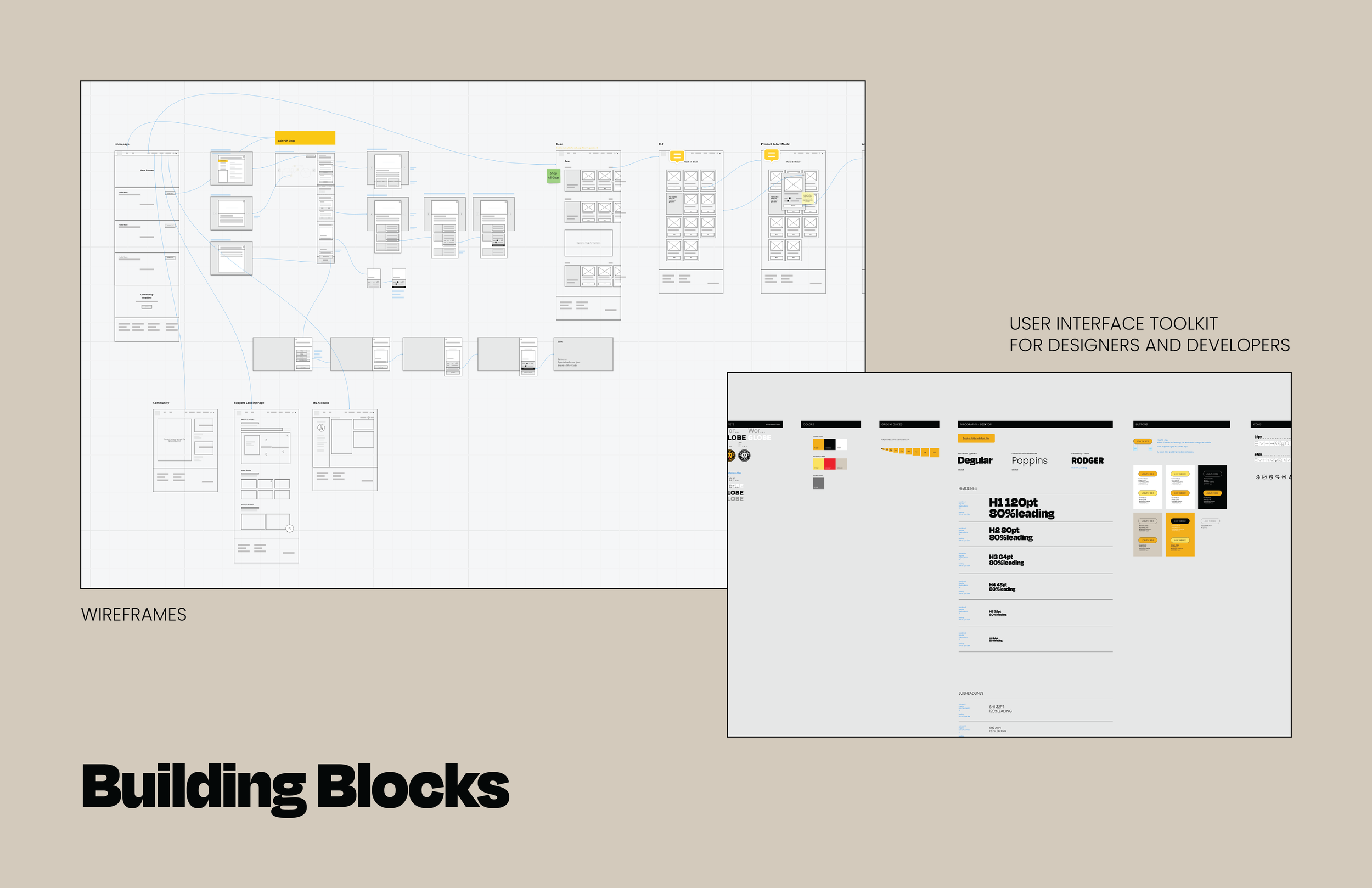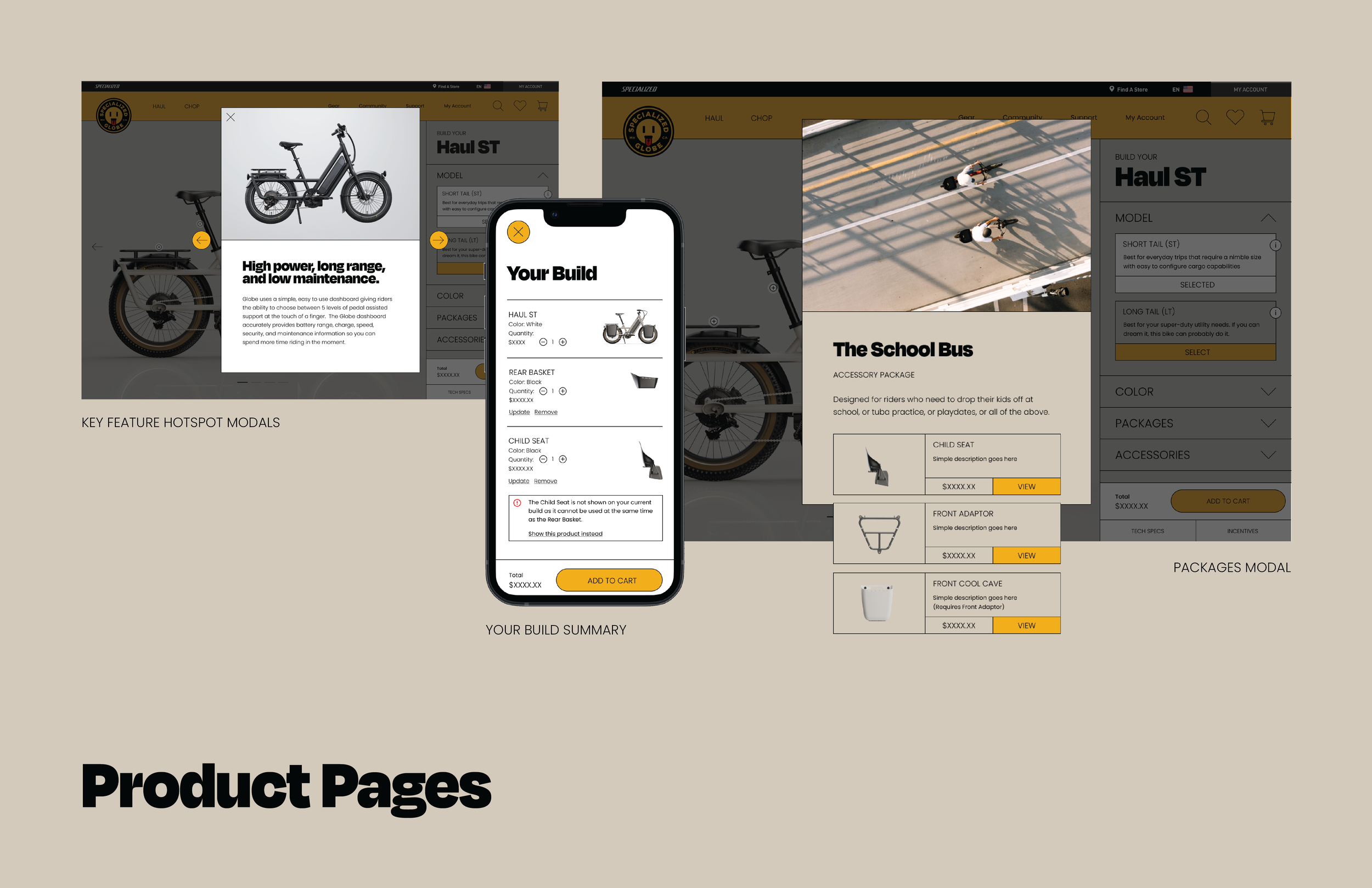
Specialized Bicycles
Globe UI/UX
Globe is a range of electric, DIY-friendly cargo bikes at Specialized that was initially slated to be it’s own sub-brand. I worked on the project as a senior UX/UI designer, with the goal of creating a separate experience on Specialized.com that felt completely different and new. The project was eventually collapsed back into Specialized as simply a range of products on the website, but the wins for me were being able to build a full web experience from scratch, ideate and develop new components, and work with a really fresh brand identity.
As the lead UX designer on the project, I worked closely with the Globe marketing team to build out a rider journey and user interface that presented the new sub-brand in an engaging and functional way, while also making sure the experience fit into the wider goals and experience of Specialized.com.
How I contributed:
Wireframing & concept mapping
High-fidelity prototyping for stakeholder buy-in
Presentations and walk-throughs with stakeholders and developers
User interface toolkit design
Collaboration with the marketing + brand design teammates
Full experience design

I put together a robust system of wireframes and tool kits to help build out a consistent system of pages and design elements. The initial direction came from a loose creative direction booklet that I interpreted with the help of marketing managers and our Director of UX.

I pursued a web design direction that complimented the quirky, DIY-friendly nature of the bikes: A grid-based outline style with prominent yellows to signify culture and tans to signify product. The overall design prioritized the brand’s off-kilter tone of voice and goofy illustrations.

I pitched a range of wild teaser ideas for the project, but development timelines eventually led to one of the simpler, yet still provocative experiences being implemented.

A huge aspect of the Globe range of bikes is that they can be customized to fit a large range of rider styles and interests. All kinds of accessories and packages can be added, so the web experience needed to reflect that experience with a product page that allowed riders to see exactly what their dream setup could look like.

There was quite a lot of work around package customization and build management, allowing riders to intuitively add accessories and see which products were compatible or required additional items.